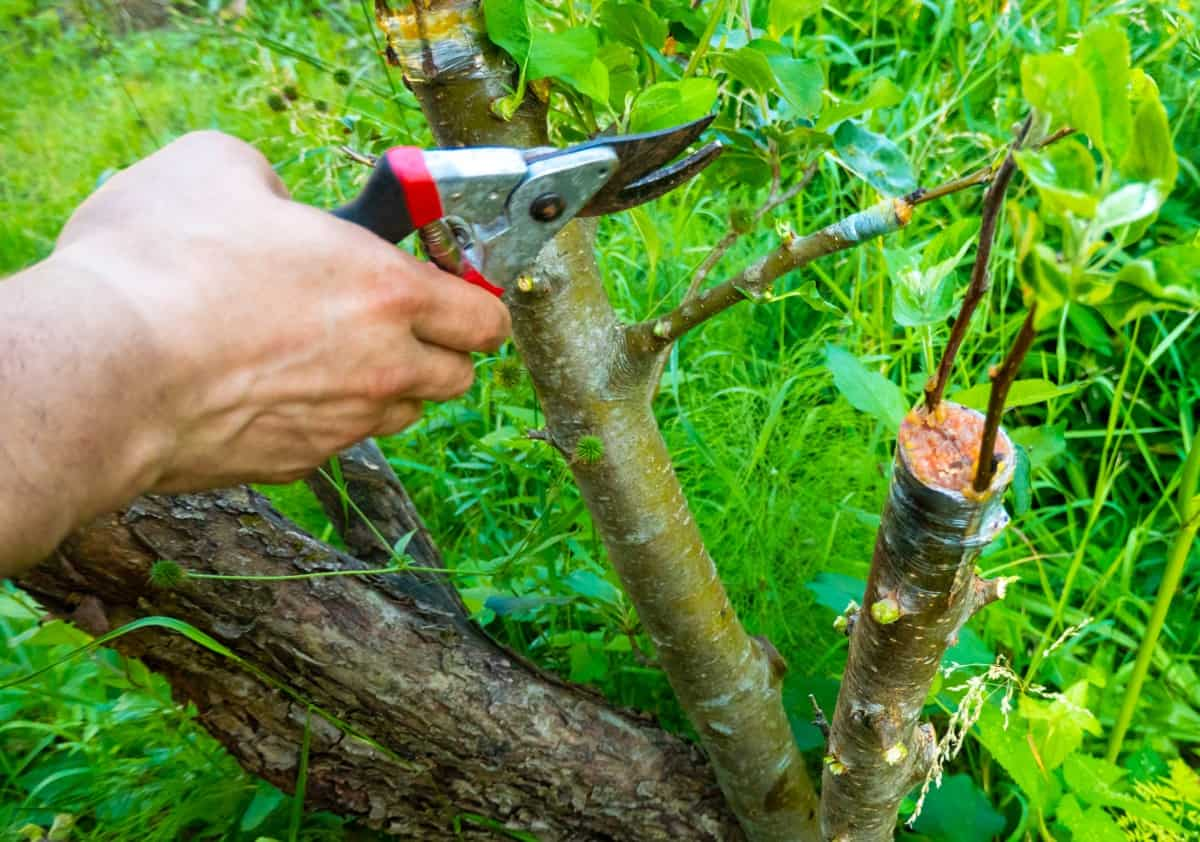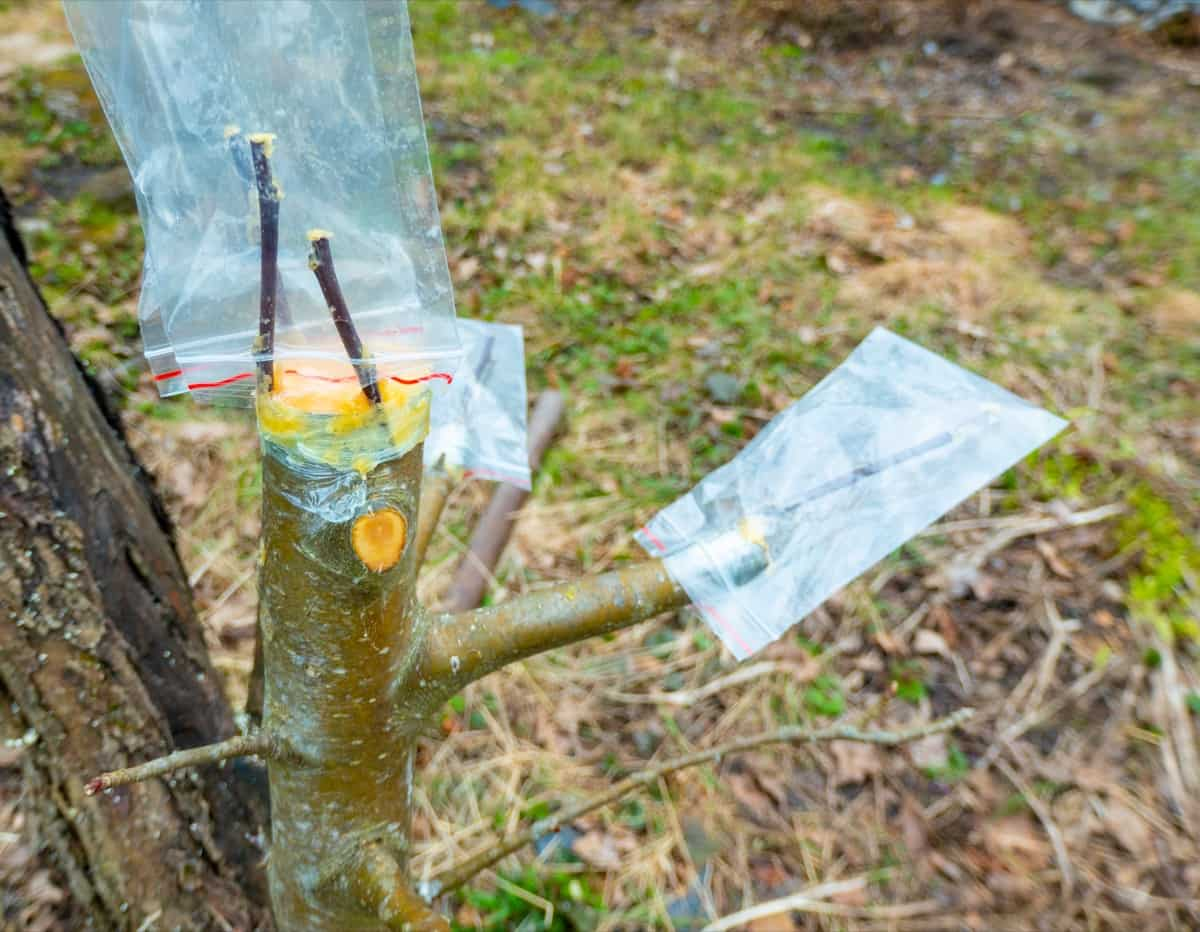Vegetative propagation, a distinctive phenomenon observed in the plant kingdom, holds commercial significance and appeals to enthusiastic gardeners well-versed in botanical knowledge. Contrary to popular belief, plants only sometimes rely on seeds for growth. This asexual mode of reproduction encompasses techniques like grafting and budding, facilitating the growth of new plants from various parts of mature ones. The resulting offspring are morphologically and genetically identical to their parent plants.

- Vegetative Propagation Significance: Unique plant phenomenon with commercial and gardening value.
- Beyond Seed Reliance: Contrary to common belief, plants can grow asexually without relying on seeds.
- Growth Techniques: Involves grafting, budding, etc., enabling new plant growth from mature parts.
- Offspring Identity: The resulting plants are identical to parent plants in appearance and genetics.
Vegetative Propagation: Diverse Modes of Asexual Plant Reproduction
Vegetative propagation, asexual in nature, involves the reproduction of plants through their leaves, roots, and stems. This process is characterized by fragmentation and subsequent regeneration of specific vegetative plant parts. The following discourse delves into the various types of vegetative propagation and provides illustrative examples.
Types of Vegetative Propagation
- Natural Vegetative Propagation: Unassisted plant growth, devoid of human intervention, where adventitious roots play a vital role.
Mechanisms
- Stem Structures: Rhizomes, bulbs, runners, and tubers are offspring-bearing stem structures.
- Roots: New plants emerge from modified tuberous roots featuring buds at the stem base.
- Leaves: Detached leaves of certain plants develop into autonomous new plants.
- Bulbs: Underground stems with food-storing leaves, apical buds, and lateral buds for shoots.
- Artificial Vegetative Propagation: Controlled asexual propagation executed by humans in fields and laboratories.
Methods
- Cutting: Plant segments, like stems or leaves, are cut and planted, often with hormone treatment to induce root growth.
- Grafting: A segment from one plant is joined to the stem of another, integrating tissues into a unified entity.
- Layering: Bending a stem to ground, covering it with soil, and allowing adventitious roots to form before separation.
- Tissue Culture: Laboratory cultivation of plant cells from varied parts, aiding the growth of rare species unviable in natural settings.
Advantages of Vegetative Propagation
Vegetative propagation, an asexual method of plant reproduction, brings forth a spectrum of advantages primarily attributed to replicating parent plant characteristics in the offspring. This practice holds particular significance in various sectors, fostering commercial viability, streamlining growth processes, and enriching scientific exploration.
- Genetic Continuity: Offspring derived from vegetative propagation mirror their parent plants, effectively passing on beneficial genetic traits.
- Quicker and More Certain: Vegetative propagation accelerates growth compared to seed-based methods. This rapid development expedites crop turnover and reduces cultivation time, which is beneficial in commercial agriculture and horticulture.
- Identical Quality: Offspring obtained through vegetative propagation exhibit identical qualities to the parent plant. This genetic consistency ensures that desired traits, such as flavor, size, and disease resistance, are faithfully preserved in subsequent generations.
- Seedless Plant Reproduction: Vegetative propagation offers a dependable alternative for plants that do not produce viable seeds or whose seeds do not reliably pass on desired characteristics. This method sidesteps the challenges associated with unpredictable seed germination and variable offspring traits.
- Superior Flower Quality: Vegetative propagation contributes to the generation of superior-quality flowers. This consistency is particularly valued in ornamental plants and flower breeding, where uniformity and enhanced aesthetics are paramount.
- Maintaining Desirable Fruit Traits: This method ensures that the desirable traits of fruits, such as sweetness, texture, and color, remain consistent across generations. Vegetative propagation guarantees a continuous supply of favored fruit characteristics in commercial orchards or home gardens.
In case you missed it: Mastering the Art of Grafting Techniques for Grape Vine

- Trait Conservation: Positive plant attributes are preserved across generations, maintaining desirable features and minimizing genetic diversity loss.
- Commercial Cloning: For commercial growers, the ability to clone high-performing plants ensures consistent and financially viable crop yields.
- Enhanced Flowering and Fruit Formation: Vegetative propagation can expedite the development of sex organs, such as flowers, seeds, and fruits. This circumvents time-consuming and intricate processes, ultimately saving resources.
- Quality Assurance: By grafting and budding, ideal plant traits, like specific characteristics in apples, can be retained in the new variety. This compatibility at the trade level ensures product integrity.
- Chimeric Diversity: While some plants are chimeras and may not inherit all parental traits, vegetative propagation still provides a means to clone desired characteristics efficiently.
- Accelerated Growth: Plants bypass the intermediate phase of seedling growth, accelerating their progression to maturity. This swifter development aids in timely harvests.
- Time and Cost Efficiency: Vegetative propagation expedites the overall growth process. Time and resource savings are substantial in both natural settings and commercial cultivation.
- Consistent Yields: Agricultural and horticultural industries experience more reliable and predictable yields through consistent reproduction of desirable plants.
- Scientific Exploration: Vegetative propagation offers a platform for in-depth biological studies. Researchers gain insights into genetics, developmental processes, and traits transferable between generations.
Disadvantages of Vegetative Propagation
Diminished Size and Longevity: Compared to plants propagated from seeds, those resulting from vegetative propagation tend to be smaller and have shorter lifespans. This is attributed to the origin of their stems, leaves, and roots solely from the cutting’s tip. Without a well-established root system, these plants struggle to store energy over extended periods and face difficulties adapting to new environments without human intervention.
Enhanced Disease Susceptibility: Young plants used for grafting and rooting in vegetative propagation are highly vulnerable to diseases. Unlike seeds that are less susceptible due to immaturity, vegetatively propagated plants are exposed to pathogens during the early stages, leading to potential disease outbreaks and compromised health.
Higher Costs: Compared to seed propagation, vegetative propagation demands more resources, time, and meticulous care. Creating a sterile environment for optimal growth requires substantial investment, including skilled horticulturalists and specialized facilities. This heightened expense can deter large-scale production.
In case you missed it: Unlocking the Success: Combating Stress and Increasing Yield through Vegetable Grafting

Varietal Limitation: Unlike seed-based methods that can yield new varieties or cultivars through cross-pollination, vegetative propagation perpetuates existing traits without introducing genetic diversity. This hampers the creation of novel plant variations, limiting potential advancements in plant traits and characteristics.
Dependence on Expertise: Successfully executing vegetative propagation necessitates skilled professionals who can maintain sterile conditions, prevent disease outbreaks, and oversee proper grafting and rooting techniques. Relying on trained individuals adds to the overall costs and may be a barrier for smaller-scale operations.
Environmental Stress: Vegetative propagation may subject plants to physiological stress due to the lack of genetic diversity and reliance on a limited number of parent plants. This can increase susceptibility to environmental changes, decreasing overall resilience and adaptability.
Diverse Modes of Vegetative Propagation in Plants
Epiphyllous Buds: In species like Bryophyllum and piggyback rose, leaves are intriguing in generating new growth. Small buds form on the leaves, each with the potential to develop roots. As these buds mature and separate from the parent plant, they drop to the ground and take root. The presence of cytokinins at the leaf edges prompts cell division, facilitating the formation of adventitious buds.
Scaly Bulbs: Plants like garlic, onions, and tulips utilize scaly bulbs as their vegetative reproductive strategy. The stem is transformed into a disk-like structure known as the base plate, from which roots extend downward. Atop this stem’s surface, leaf bases are attached. Axillary buds, present at nodes where leaves are connected, can evolve into new bulbs over successive years. This abundance of bulbs can lead to resource competition, affecting flowering and necessitating timely bulb removal.
Corms: Unlike bulbs, corms are the vegetative structures of plants like gladiolus and crocus. These basal structures lack the extended root system and instead feature roots emerging from a convex base. Both axillary and apical buds are situated on the upper, concave surface. Each bud can develop into a new corm in the following year. Corm accumulation on the original corm’s surface leads to clusters that may require thinning to ensure healthy growth.
Tubers: Tubers are employed by plants such as Jerusalem Artichoke and potatoes. Underground rhizomes send out subterranean branches, eventually leading to swollen structures known as tubers. These tubers are packed with apical and axillary buds and serve as a repository of potential new growth. Each of these buds can sprout into an independent potato plant, highlighting the remarkable regenerative potential of tubers.
Stolons: Strawberries utilize stolons, horizontal above-ground branches with miniature leaves. These stolons create tiny plantlets at their tips. The crown of the plantlet grows, lifting the stolon upward. Upon contact with the ground, auxins accumulate, triggering root formation. The stolon’s end that touches the ground eventually becomes anchored, leading to the establishment of a new plant.
Tip Layer: Blackberries and black raspberries employ tip layering, where arching shoots touch the soil and trigger root formation. Auxins accumulate through stem-soil interaction and horizontal positioning, inducing root growth. This dense network of roots generates a thicket of new plants, serving as a natural barrier.
Root Sprouts: Red raspberries and various shrubs propagate through root sprouts. Cytokinins, plant growth regulators, accumulate in the roots, stimulating shoot formation. New shoots, termed “root” sprouts or “suckers,” emerge near the shrub’s base. These sprouts can increase significantly, contributing to the expansion of plant colonies.
In case you missed it: A Guide to Understanding Mango Tree Propagation: From Seed, Cuttings, Grafting, and Budding

Artificial Vegetative Propagation: Techniques for Cloning Plants
Artificial vegetative propagation is a method of asexual plant reproduction that enables the creation of new plants from specific plant parts, such as stems, roots, or leaves. This technique offers precise control over the propagation process, allowing for replicating desired traits.
Cutting: Stem Cutting: A portion of the parent plant’s stem, including at least one leaf node, is partially buried in the soil to encourage the development of new roots. This method is employed in propagating plants like roses and sugar cane.
Root Cutting: A section of a root is placed beneath the soil’s surface, triggering the growth of new shoots. Plants like lemon and fig are propagated using root cutting.
Leaf-cutting: Leaves are inserted into moist soil, leading to the emergence of new stems and roots. A new plant develops at the base of the leaf. For instance, Bryophyllum and Begonia utilize this method.
Layering: Layering involves stimulating root growth on a stem or branch while it remains attached to the parent plant. Once rooted, the section is separated to form an independent new plant. There are several variations of layering techniques:
Simple Layering: A lower branch of a young plant is bent to the ground, and a node is buried while leaving the tip exposed. Roots develop from the buried portion, and the new plant is later transplanted. Plants like Rhododendron and jasmine can be propagated this way.
Compound Layering: Multiple nodes are covered with soil, resulting in several new shoots. Once rooted, these sections can be cut and transplanted, yielding multiple plants. Plants like guava and tomatoes can be propagated using this method.
Tip Layering: Soil is added to a shallow trench around the tip of a plant, encouraging root growth and new plant development. The new plant is separated and transplanted after rooting. Black raspberries, strawberries, and others can be propagated through tip layering.
Mound Layering: This technique is useful for robustly branched fruit shrubs and rootstocks. New shoots emerge from dormant buds after pruning the plant in the dormant season. The shoots are positioned over a mound of soil, and roots develop at the base. Examples include plum and peach trees.
Air Layering: Suitable for large houseplants challenging to bend to the ground, air layering involves removing a bark ring from a stem and encouraging root growth before separation. Rubber plants are commonly propagated through air layering.
Grafting: A Method of Plant Fusion for Desired Traits
Grafting is a technique in which parts of two or more plants are joined to form a single plant with desired attributes. It involves placing the top part (scion) of one plant onto another plant’s root system (rootstock), allowing them to grow closely together. This method imparts qualities like toughness, drought resistance, disease immunity, and specific fruit characteristics from the scion to the rootstock.
In case you missed it: Best Fruit Plant Nurseries in Maharastra: Sapling Suppliers of Hybrid and High-Yield Fruit

- Slice Grafting: Used for herbaceous plants or those with a stem diameter of 1⁄2 inch or less. The rootstock is cut at the base with a diagonal cut, and a similar cut is made on the scion. Both pieces are tightly bound with a rubber grafting band.
- Whip and Tongue Grafting: Suitable for similar-sized scion and stock (up to 1⁄2 inch in diameter). Both scion and stock are cut diagonally, and a tongue-like shape is created on each. They are interlocked and secured with a grafting strip or twine.
- Saddle Grafting: Both rootstock and scion have the same diameter, and the rootstock should not exceed 1 inch in width. V-shaped cuts are made on both parts, and they are joined together.
- Cleft Grafting: The rootstock is wider (1-4 inch diameter) than the scion (1/2 inch diameter). A cleft is made in the stock, and a wedge-shaped scion is inserted to ensure cambium contact.
Propagation Meaning in Different Languages in India
| Propagation Meaning in Telugu | పవర్థనము |
| Propagation Meaning in Kannada | ಪ್ರಸರಣ |
| Propagation Meaning in Malayalam | പ്രചരണം |
| Propagation Meaning in Tamil | பரப்புதல் |
| Propagation Meaning in Marathi | वंशवृध्दी |
| Propagation Meaning in Gujarati | સંપ્રસારણ |
| Propagation Meaning in Hindi | फैलाव |
| Propagation Meaning in Urdu | تبلیغ |
Conclusion
Vegetative propagation offers benefits such as rapid replication of desirable traits, identical quality, and propagation of plants with non-viable seeds. However, it’s limited by shorter lifespans, disease vulnerability, higher costs, lack of genetic diversity, and expert dependence.
- How to Build a Low-budget Goat Shed: Cheap Ideas and Tips
- Goat Farming Training Programs in India: A Beginner’s Guide
- Types of Pesticides Used in Agriculture: A Beginner’s Guide
- Economical Aquaculture: A Guide to Low-Budget Fish Farming
- 15 Common Planting Errors That Can Doom Your Fruit Trees
- How to Make Houseplants Bushy: Effective Tips and Ideas
- Innovative Strategies for Boosting Coconut Pollination and Yield
- Pollination Strategies for Maximum Pumpkin Yield
- The Complete Guide to Chicken Fattening: Strategies for Maximum Growth
- Natural Solutions for Tulip Problems: 100% Effective Remedies for Leaf and Bulb-Related Issues
- Revolutionizing Citrus Preservation: Towards a Healthier, Greener Future
- Natural Solutions for Peony Leaf and Flower Problems: 100% Effective Remedies
- Maximizing Profits with Avocado Contract Farming in India: A Comprehensive Guide
- Natural Solutions for Hydrangea Problems: 100% Effective Remedies for Leaf and Flowers
- The Ultimate Guide to Choosing the Perfect Foliage Friend: Bringing Life Indoors
- From Sunlight to Sustainability: 15 Ways to Use Solar Technology in Agriculture
- The Ultimate Guide to Dong Tao Chicken: Exploring from History to Raising
- The Eco-Friendly Makeover: How to Convert Your Unused Swimming Pool into a Fish Pond
- Mastering the Art of Delaware Chicken Farming: Essentials for Healthy Backyard Flocks
- 20 Best Homemade Fertilizers for Money Plant: DIY Recipes and Application Methods
- How to Craft a Comprehensive Free-Range Chicken Farming Business Plan
- Brighten Your Flock: Raising Easter Egger Chickens for Beauty and Bounty
- How to Optimize Your Poultry Egg Farm Business Plan with These Strategies
- Subsidy for Spirulina Cultivation: How Indian Government Schemes Encouraging Spirulina Farmers
- Ultimate Guide to Raising Dominique Chickens: Breeding, Feeding, Egg-Production, and Care
- Mastering the Art of Raising Jersey Giant Chickens: Care, Feeding, and More
- Ultimate Guide to Raising Legbar Chickens: Breeding, Farming Practices, Diet, Egg-Production
- How to Raise Welsummer Chickens: A Comprehensive Guide for Beginners
- How to Protect Indoor Plants in Winter: A Comprehensive Guide
- Ultimate Guide to Grow Bag Gardening: Tips, Tricks, and Planting Ideas for Urban Gardeners
- Guide to Lotus Cultivation: How to Propagate, Plant, Grow, Care, Cost, and Profit
- Agriculture Drone Subsidy Scheme: Government Kisan Subsidy, License, and How to Apply Online
- Ultimate Guide to Raising Araucana Chickens: Breed Profile, Farming Economics, Diet, and Care
- Bringing Hydroponics to Classroom: Importance, Benefits of Learning for School Students
- Ultimate Guide to Raising Polish Chickens: Breed Profile, Farming Economics, Diet, and Care
- Ultimate Guide to Raising Australorp Chickens: Profile, Farming Economics, Egg Production, Diet, and Care